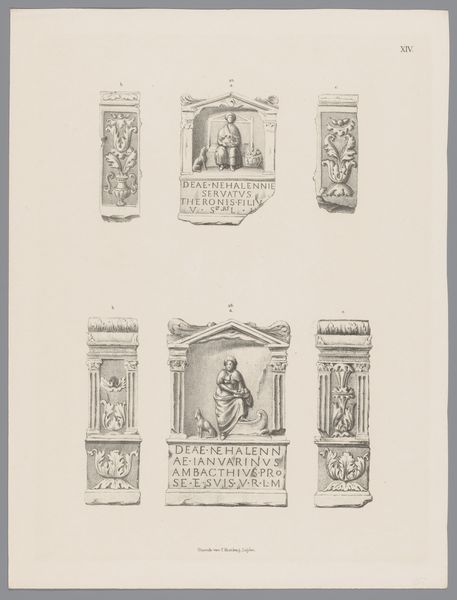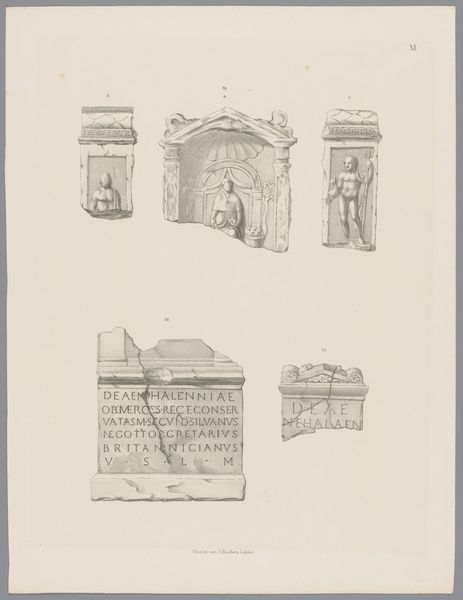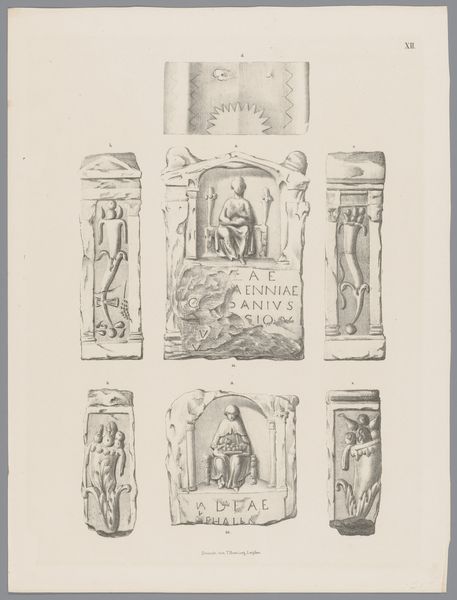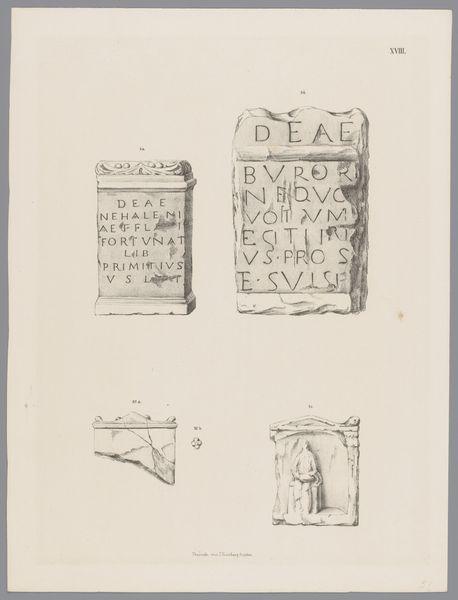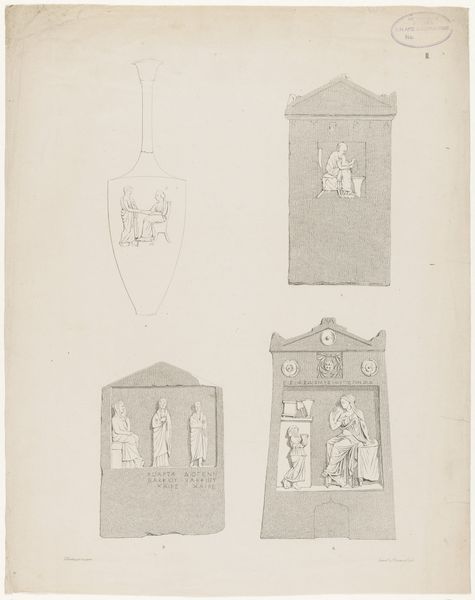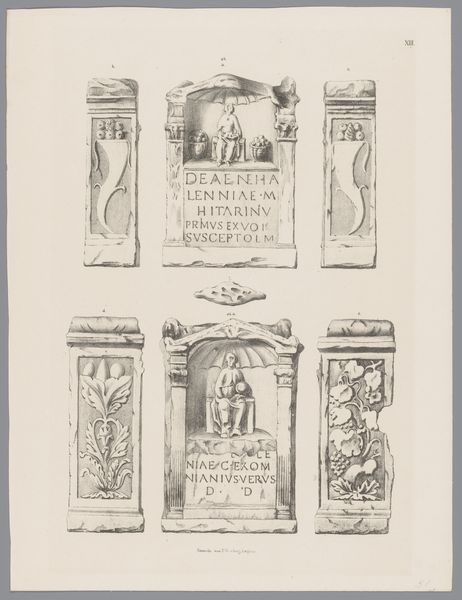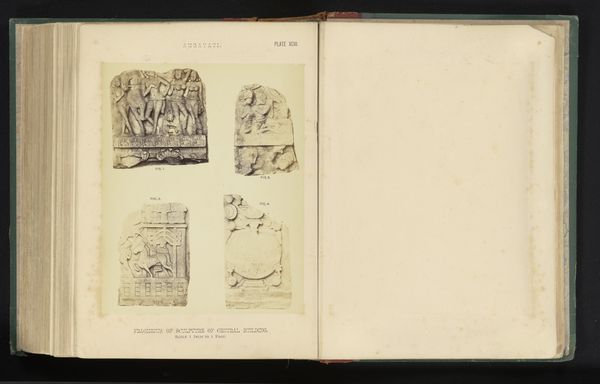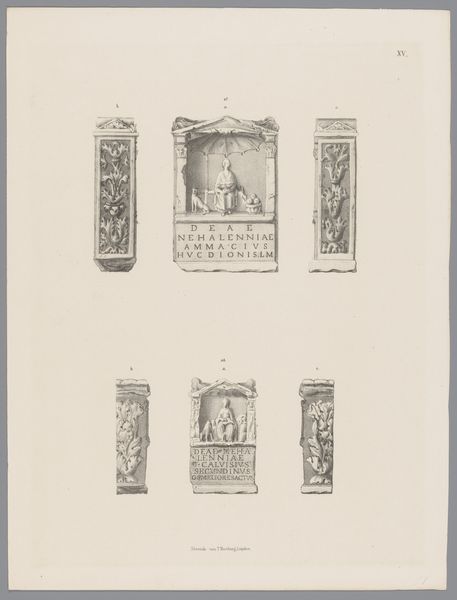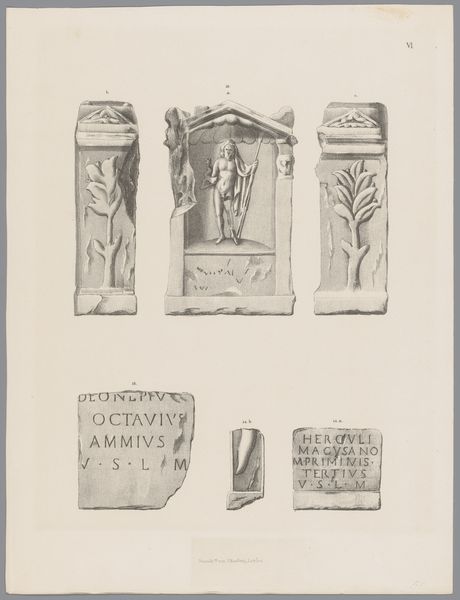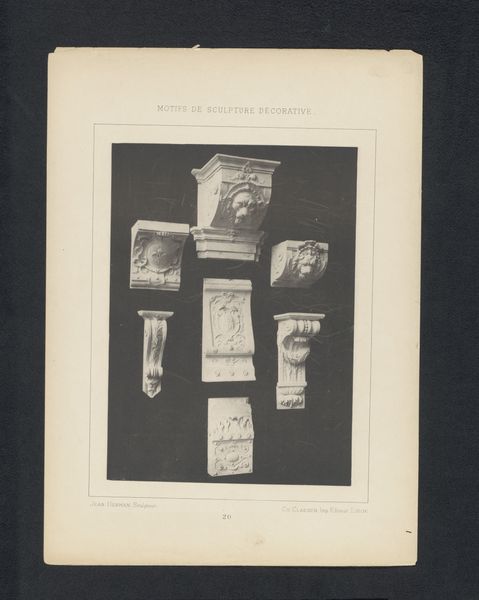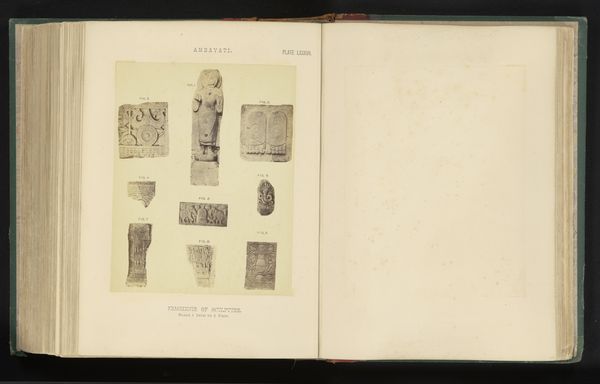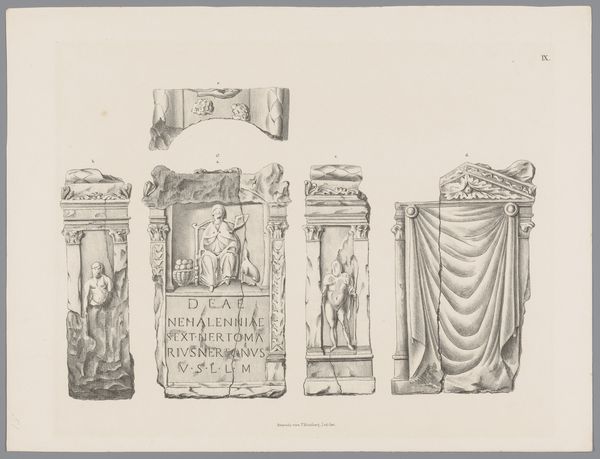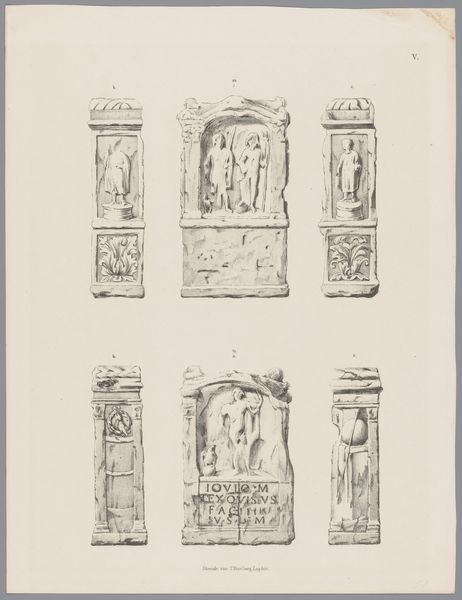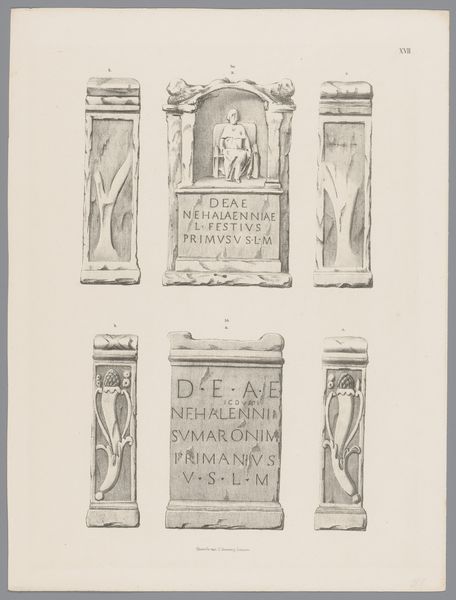
drawing, ink, pen
#
drawing
#
comic strip sketch
#
statue
#
pen sketch
#
greek-and-roman-art
#
landscape
#
figuration
#
personal sketchbook
#
ink
#
sketchwork
#
ink drawing experimentation
#
ancient-mediterranean
#
pen-ink sketch
#
pen work
#
sketchbook drawing
#
pen
#
storyboard and sketchbook work
#
sketchbook art
Dimensions: height 360 mm, width 270 mm
Copyright: Rijks Museum: Open Domain
This lithograph was made by Tiemen Hooiberg in the Netherlands, sometime in the 19th century. It depicts several Roman statues and architectural fragments. These images participate in a long history of reproducing and distributing classical art, which took on new institutional forms in 19th-century Europe. Art academies taught students to draw from plaster casts of ancient sculptures and museums displayed newly excavated antiquities. In this context, accurate copies of classical works became crucial for training artists and shaping public taste. Hooiberg's lithograph presents itself as a straightforward record, but we should remember that the artist and the institutions behind him were not neutral. The choice of which works to reproduce, how to arrange them on the page, and how to distribute the print all reflect cultural values. To understand this lithograph better, one could research the history of Dutch art academies and museums in the 19th century. By looking at the institutional context, we can better understand the social and cultural forces that shaped the production and reception of art.
Comments
No comments
Be the first to comment and join the conversation on the ultimate creative platform.
